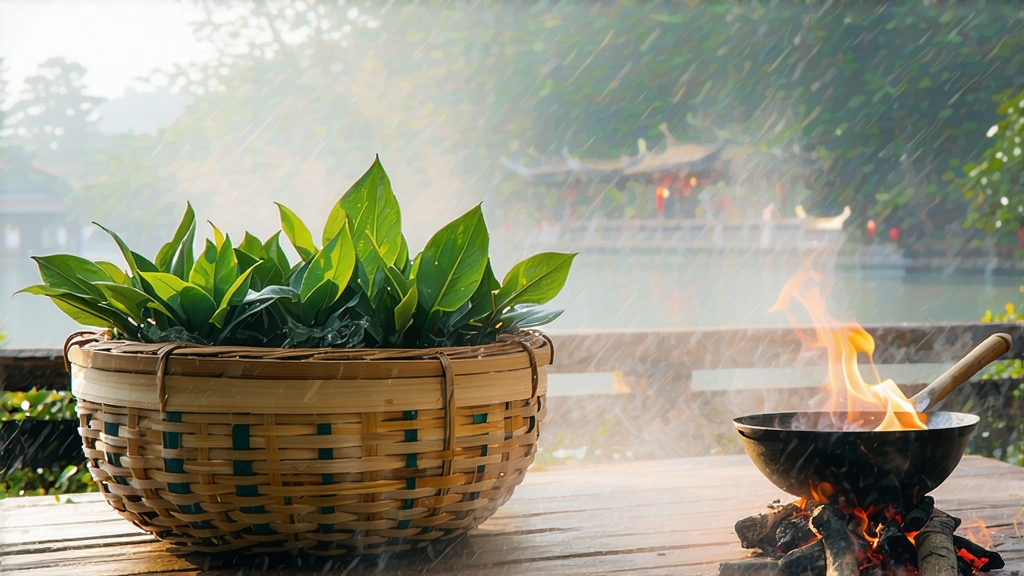
Longjing, literally “Dragon-Well,” is more than a tea; it is a liquid manuscript of Chinese aesthetics, geography, and social ritual. First praised in Tang-dynasty gazetteers and immortalized when the Qianlong Emperor (r. 1735-96) planted eighteen bushes beside Hangzhou’s Lion Peak, Longjing has spent twelve centuries refining its reputation from regional curiosity to national icon. Today it anchors the green-tea pantheon the way Burgundy anchors Pinot Noir: a benchmark against which all others are measured, yet still capable of surprise.
Geography is destiny. The core appellation, Xihu Longjing, is squeezed between West Lake’s mirror-flat water and the Qiantang River’s humid breath. The micro-climate traps morning mist that filters UV light, slowing photosynthesis and stacking amino acids—especially L-theanine—into the buds. Granitic soils drain quickly, forcing roots to dive deep for minerals that translate into a signature flinty snap. Move fifteen kilometers outward and the same cultivar delivers a paler echo; the Chinese government therefore protects 168 square kilometers as a legally delimited origin, a rarity in the tea world.
Cultivars matter too. While the classic clone is Longjing #43—bred in 1960 for early budding and high fragrance—heritage bushes called qunti zhong (group-type seed stock) still survive on cliff terraces. #43 yields a brighter, more uniform cup with pronounced orchid top notes; qunti zhong offers layered complexity, a slower sweetness, and the tactile “bite” that connoisseurs liken to young fennel. Farmers often hedge risk by keeping both, the way a vintner bottles both estate and cuvée.
Timing is measured in solar terms. The first flush, mingqian, is picked before Qingming festival (around April 5) when nights still dip to 8 °C and each bud contains the winter’s compressed energy. A skilled picker can finish 200 grams of fresh leaves in an hour—roughly 18,000 tips—that will shrink to 50 grams after firing. The second window, yuqian, ends before Grain Rain (April 20) and produces a slightly broader leaf with bean-like sweetness. Anything later is simply spring tea, priced at one-tenth of mingqian and destined for teabags or restaurant service.
Withering is skipped; Longjing is a “kill-green” tea. Within minutes of plucking, the leaves are spread no thicker than two centimeters on bamboo trays and ventilated with gentle fans to evaporate surface moisture. The goal is to reduce grassy volatiles without oxidizing enzymes—every minute of delay risks the dreaded red-edge that downgrades value.
Hand-firing in a seasoned wok is the ballet that converts chemistry into poetry. The wok is pre-heated to 280 °C, then cooled to 80 °C within seconds by a whisk of damp hemp cloth. The tea master—often a woman whose family thumbs know the exact micro-groove of the iron—throws in 250 grams of leaves. For ten minutes she presses, lifts, and shakes, using only her bare palms to feel the moisture gradient. The motion called “grasp and shake” both dehydrates and sets the flat sword shape. Another ten minutes at 60 °C refines the texture, followed by a final five-minute “polish” at 50 °C that coaxes the characteristic sheen. Total elapsed time: twenty-five minutes; apprenticeship to perform it: five years.
Machines can mimic the geometry but not the micro-tuning. A robotic arm applies uniform pressure, generating 78 % of the aroma compounds found in hand-made lots, yet missing the caramelized edges that come from split-second temperature spikes. Top auctions still reward the human touch: in 2021, 100 grams of Lion Peak pre-Qingming hand-fired Longjing sold for US$ 2,800, roughly the price of a single-malt cask.
Flavor grammar begins with dry-leaf aromatics. Rub three grams between your palms; a burst of roasted chestnut and sweet corn signals proper storage (below 5 °C, nitrogen-flushed, opaque barrier film). Infuse at 80 °C for twenty seconds in a tall glass—Hangzhou’s preferred vessel so the vertical dance of leaves can be observed. The liquor should glow like early-mountain olive oil. First sip: a flash of umami